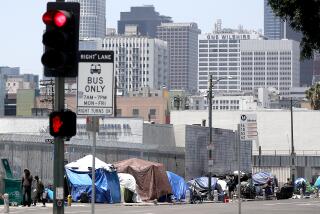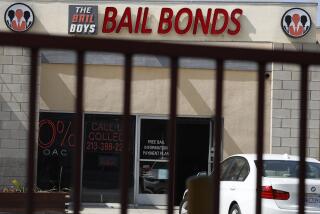Gangs--On the Edge of Anarchy : But even a sympathetic judge says some crackdowns go too far
The city of Westminster was on shaky legal ground from the beginning in its attempt to stop 49 members of the West Trece gang from associating with one another in a 25-block area. A judgehas wisely found the city’s effort unconstitutional, but the city should not lose heart. It, like other cities, must continue to press its other programs to stamp out criminal activity.
It is a measure of the terror that gangs instill that Westminster tried to stretch the Constitution in the first place. Several cities in Los Angeles County have attempted the same tactic, but usually for a limited time and in a smaller area. A similar Los Angeles city ordinance awaits a court ruling.
Orange County Superior Court Judge Richard J. Beacom clearly recognized Westminster’s problem, and sympathized with city officials. The judge exaggerated only a little when he said that society was “on the edge of anarchy” because of the gangs.
But he correctly ruled that freedom of association would be violated by the restraining order obtained by the city June 30. It barred the 49 men from “standing, sitting, walking, driving, gathering or appearing anywhere in public view” with other gang members in a 25-square-block area.
A prosecutor said that the intent of the original order was to let police arrest gang members before they committed a crime. That’s not the way the American legal system is supposed to work. Police can use conspiracy statutes to stop a crime before it happens, but those laws require showing of intent and an overt act, not just hanging around with another gang member.
Existing law already allows gang members who have been convicted of crimes to be barred from associating with gang colleagues as a condition of probation. That’s a state statute that the city has rightly used in its crackdown on the gangs operating within its borders.
Westminster also has a special gang-fighting program that links two police officers, two county probation officers and two members of the county district attorney’s office who check gang hangouts, monitor suspicious activity and track probation violations. The program has drawn deserved praise and should be a model for other cities.
More to Read
Sign up for Essential California
The most important California stories and recommendations in your inbox every morning.
You may occasionally receive promotional content from the Los Angeles Times.










